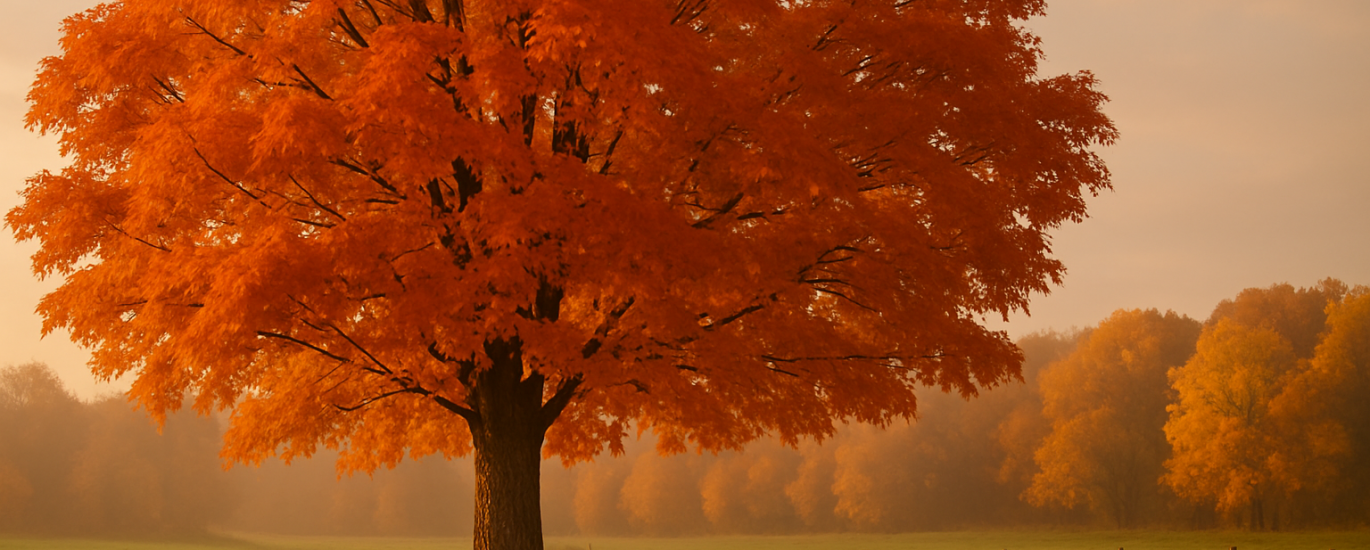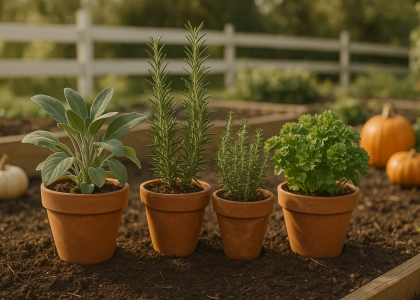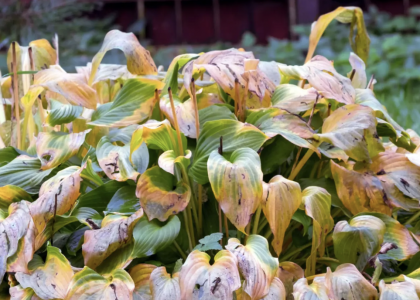The maple tree has long held a cherished place in North American and European landscapes. With its graceful branching, iconic leaf silhouette, and dependable seasonal color, it brings depth and quiet elegance to gardens large and small. From the first tender spring leaves to the rich reds and ambers of autumn, maple trees offer a steady rhythm of beauty throughout the year.
Available in a wide range of sizes and forms—from towering shade trees to compact Japanese maple cultivars—maples adapt easily to different climates, garden styles, and planting spaces. Whether grown in the ground or displayed in a decorative container, a maple provides four seasons of character and a sense of continuity that anchors the surrounding landscape.
Popular Maple Varieties
Japanese Maple (Acer palmatum)
Prized for its delicate foliage and sculptural form.
Ideal for small gardens, patios, and woodland borders.
Leaves may emerge crimson, chartreuse, or variegated depending on the cultivar.

Red Maple (Acer rubrum)
A classic choice across the eastern United States.
Known for fast growth, strong structure, and brilliant fall color.
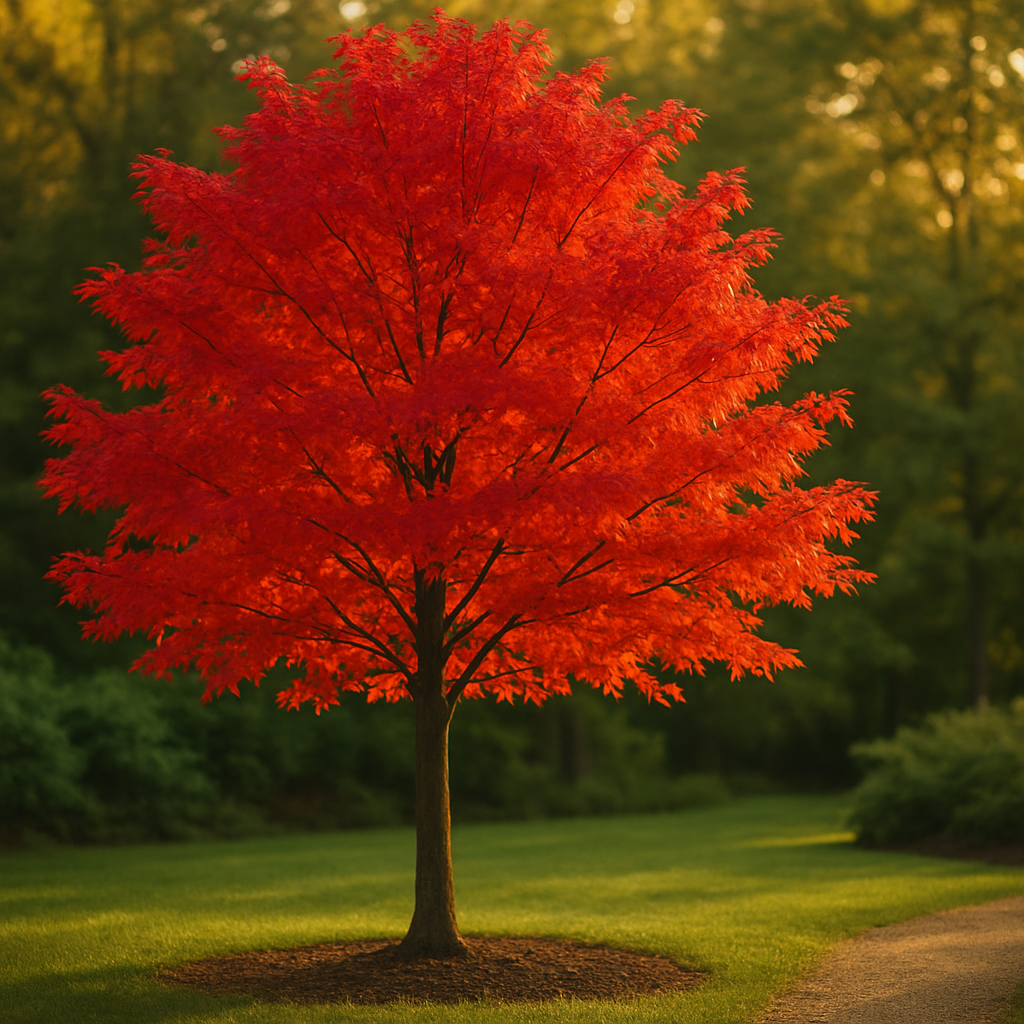
Sugar Maple (Acer saccharum)
Famous for maple syrup and spectacular autumn displays.
A long-lived tree suited for larger properties.
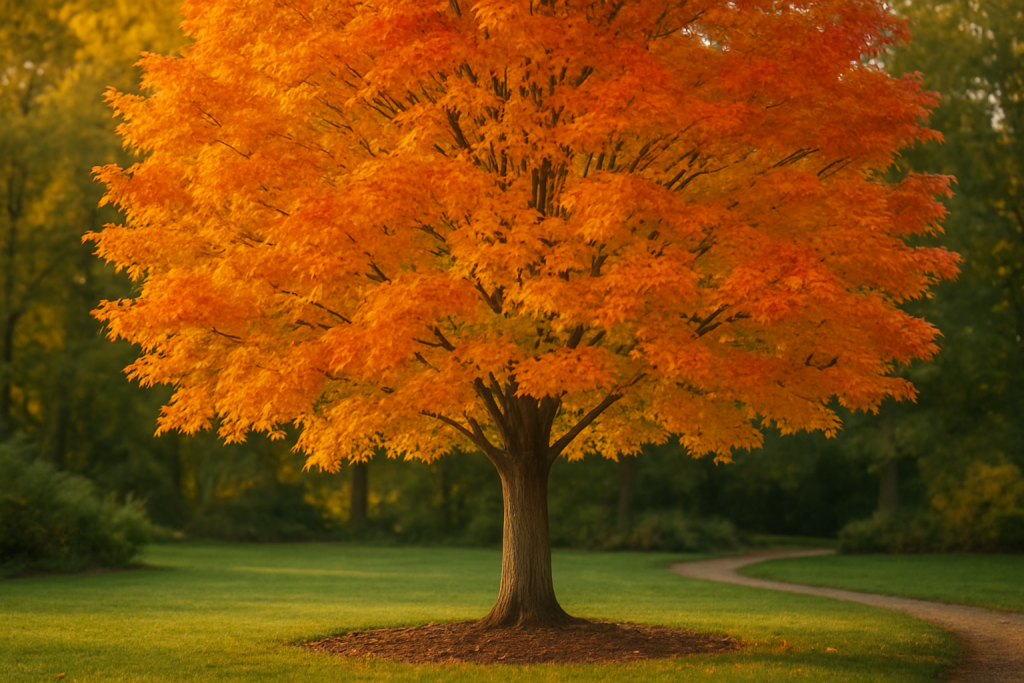
Norway Maple (Acer platanoides)
Common in European and North American urban landscapes.
Tolerates pollution and varied soil types.

Amur Maple (Acer ginnala)
Compact, cold-hardy, and ideal for northern climates.
Produces outstanding scarlet fall foliage.
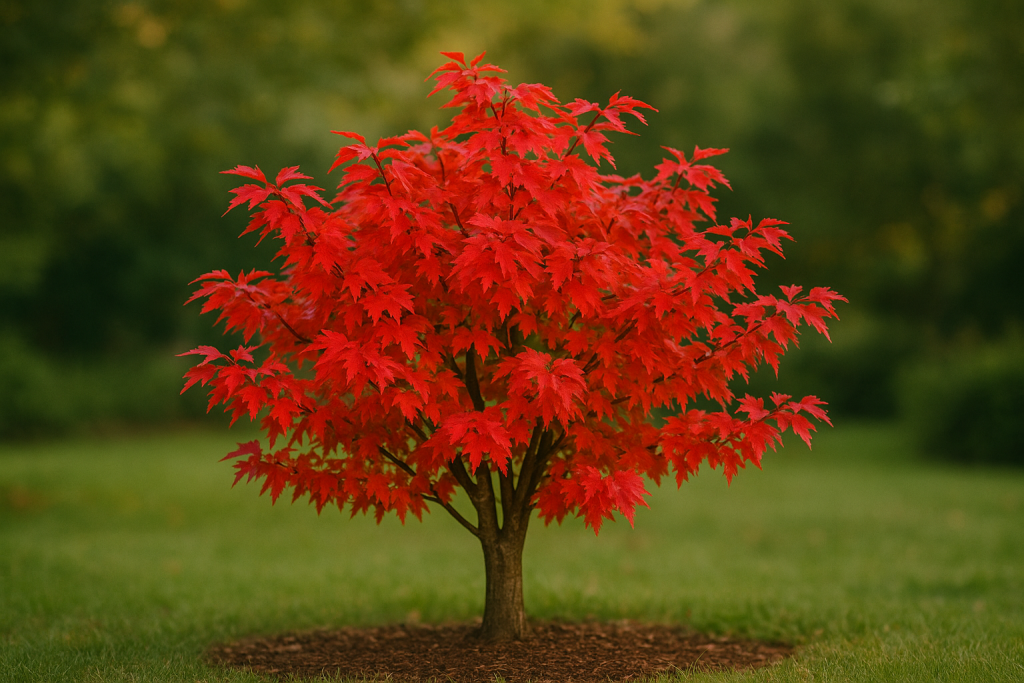
Horticultural Care Guide
A well-cared-for maple rewards gardeners with decades of beauty. The following care practices reflect horticultural standards recommended by arborists and garden professionals:
Light Requirements
- Most maples develop their best autumn color in full sun.
- Japanese maples benefit from morning sun and afternoon shade, especially in warmer zones, to prevent leaf scorch.
Soil Preferences
- Maples grow best in well-drained, slightly acidic soil (pH 5.5–6.5).
- Incorporate compost at planting time to improve structure and moisture retention.
- Avoid heavy clay that remains saturated for long periods.
Watering
- Young trees require deep weekly watering during their first two to three years.
- Mature trees tolerate moderate drought but benefit from occasional deep soaking during extended dry periods.
- Japanese maples prefer consistent moisture without waterlogging.
Mulching
- Apply a 5–8 cm (2–3 inch) layer of shredded bark or leaf mold around the root zone.
- Keep mulch several centimeters away from the trunk to prevent rot and pest issues.
Fertilizing
- Maples generally require minimal fertilization.
- If needed, apply a balanced slow-release fertilizer in early spring.
- Excessive nitrogen encourages lush growth at the expense of fall color.
Pruning
- Conduct structural pruning in late winter or early spring before sap begins to flow.
- Remove crossing branches, storm damage, or weak growth.
- Maintain the tree’s natural shape—maples respond best to light, thoughtful pruning.
Container Growing
- Many Japanese maples thrive in large ceramic or wooden containers.
- Use a high-quality loamy potting mix with excellent drainage.
- Protect roots from extreme heat or deep winter freeze by insulating containers or moving them to sheltered areas.
Seasonal Interest
Spring
Young leaves unfurl in shades of lime, burgundy, bronze, or coral depending on the cultivar. Some species produce small, attractive red flowers that feed early pollinators.
Summer
Maples provide soothing shade and a calm canopy, making them ideal for seating areas, patios, and woodland gardens.
Autumn
This is the maple’s signature moment—brilliant reds, golds, and oranges create some of the most iconic fall landscapes in the world.
Winter
Bare branches form elegant silhouettes against snow or winter skies. Japanese maples, in particular, offer a sculptural presence appreciated in four-season design.
Symbolism and Cultural Significance
Maples hold deep symbolic meaning across cultures:
- Home and belonging
- Stability and grounding
- Abundance and gratitude
- Transition and renewal
Because of their strong seasonal associations, maple branches and leaves frequently appear in fall decorating, holiday gatherings, and nature-inspired crafts.
Decorative Uses Throughout the Year
- Pressed leaves for artwork, stationery, and seasonal displays
- Maple leaf garlands for doorways and mantels
- Fall centerpieces combining pumpkins, candles, and amber foliage
- Winter branch arrangements adding height and structure indoors
- Container Japanese maples as patio focal points
Maples pair naturally with rustic wood, soft linen, and neutral color palettes often seen in contemporary fall décor.
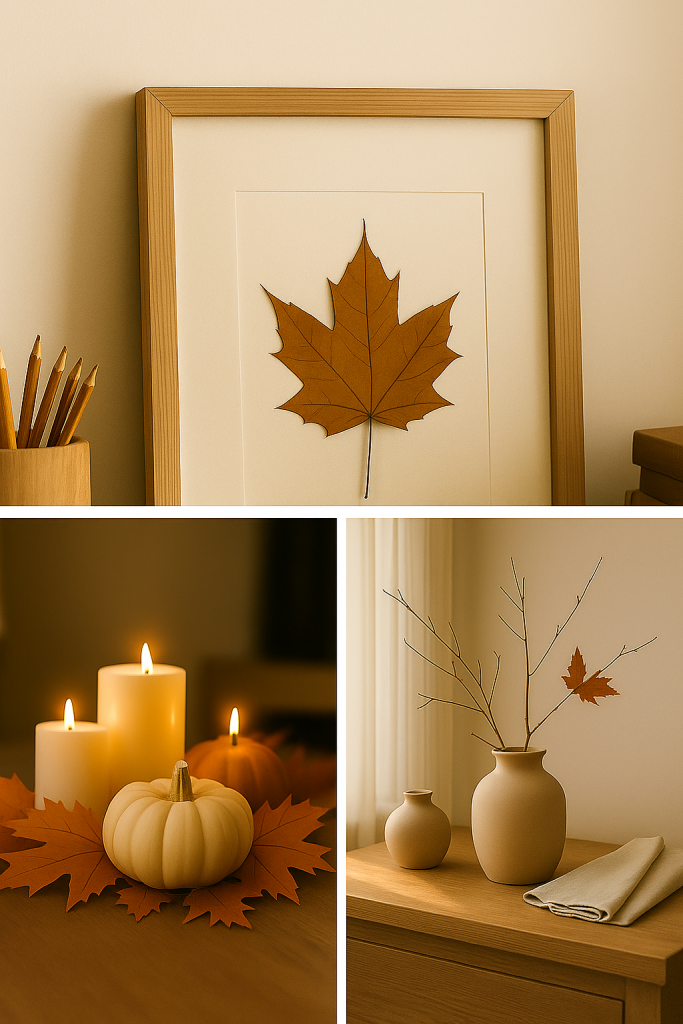
Practical Ideas for Everyday Gardeners
Choosing Maples for Small Spaces
Select dwarf or compact Japanese maple cultivars that stay manageable and perform well in partial shade.
Enhancing Fall Color
- Ensure full morning sun
- Maintain slightly acidic soil
- Avoid over-fertilizing
Protecting Maples from Summer Stress
- Mulch generously
- Water deeply during heatwaves
- Provide afternoon shade for Japanese maples in hot climates
Frequently Asked Questions
When is the best time to plant a maple tree?
Early spring or autumn, when temperatures are mild and soil moisture is steady.
Can Japanese maples grow indoors?
Only for short periods; they are outdoor trees and require seasonal dormancy.
How long do pressed maple leaves last?
Months to years if dried properly and stored away from sunlight.
Which maple varieties produce the strongest fall color?
Japanese maple ‘Osakazuki,’ Red maple, and Sugar maple are top performers.
Final Thoughts
The maple tree offers far more than autumn color. Its shifting foliage, graceful form, and enduring presence enrich the garden through every season. Whether planted as a shade tree, showcased in a container, or appreciated for its ornamental leaves, the maple remains a steadfast favorite—one that brings beauty, structure, and a sense of home wherever it grows.

